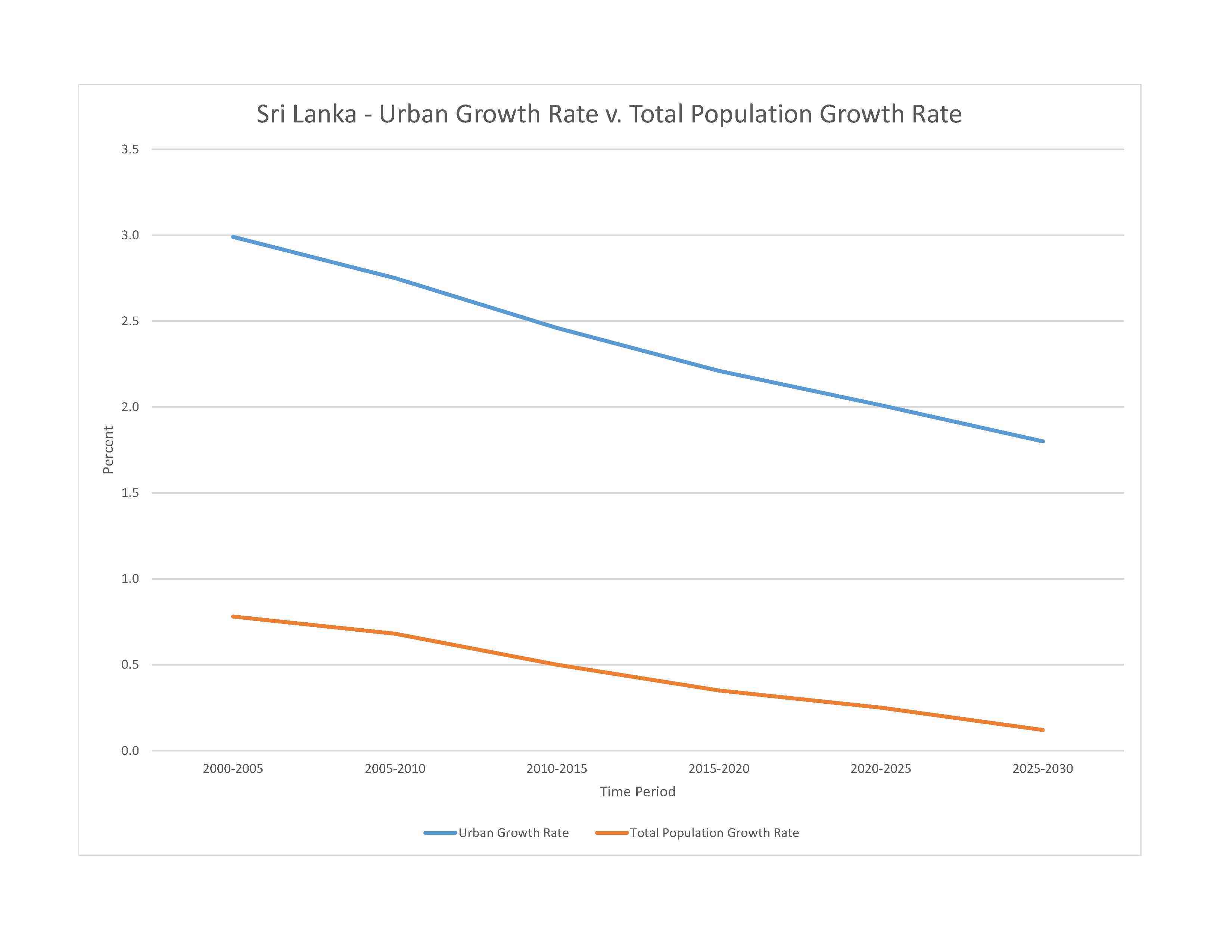
deforestation; soil erosion; wildlife populations threatened by poaching and urbanization; coastal degradation from mining activities and increased pollution; coral reef destruction; freshwater resources being polluted by industrial wastes and sewage runoff; waste disposal; air pollution in Colombo
party to: Biodiversity, Climate Change, Climate Change-Kyoto Protocol, Climate Change-Paris Agreement, Desertification, Endangered Species, Environmental Modification, Hazardous Wastes, Law of the Sea, Nuclear Test Ban, Ozone Layer Protection, Ship Pollution, Wetlands
signed, but not ratified: Comprehensive Nuclear Test Ban, Marine Life Conservation
tropical monsoon; northeast monsoon (December to March); southwest monsoon (June to October)
agricultural land: 43.5% (2018 est.)
arable land: 20.7% (2018 est.)
permanent crops: 15.8% (2018 est.)
permanent pasture: 7% (2018 est.)
forest: 29.4% (2018 est.)
other: 27.1% (2018 est.)
urban population: 19.2% of total population (2023)
rate of urbanization: 1.22% annual rate of change (2020-25 est.)

widespread lack of access:due to serious macroeconomic challenges, significant reduction in 2022 cereal output, and high food prices - severe macroeconomic challenges, mostly reflecting dwindling foreign currency reserves after revenues from merchandise exports, remittances, and from the tourist sector declined dramatically over the last year, have had a negative impact on the country’s capacity to import cereals; the 2022 cereal production sharply declined due to a government ordered reduction in the application of chemical fertilizers; unprecedentedly high food prices are constraining economic access to food for a majority of households
0.06% of GDP (2018 est.)
0% of GDP (2018 est.)
particulate matter emissions: 23.88 micrograms per cubic meter (2019 est.)
carbon dioxide emissions: 23.36 megatons (2016 est.)
methane emissions: 10.95 megatons (2020 est.)
municipal solid waste generated annually: 2,631,650 tons (2016 est.)
municipal solid waste recycled annually: 336,588 tons (2016 est.)
percent of municipal solid waste recycled: 12.8% (2016 est.)
municipal: 810 million cubic meters (2020 est.)
industrial: 830 million cubic meters (2020 est.)
agricultural: 11.31 billion cubic meters (2020 est.)
52.8 billion cubic meters (2020 est.)
NOTE: The information regarding Sri Lanka on this page is re-published from the 2024 World Fact Book of the United States Central Intelligence Agency and other sources. No claims are made regarding the accuracy of Sri Lanka 2024 information contained here. All suggestions for corrections of any errors about Sri Lanka 2024 should be addressed to the CIA or the source cited on each page.
This page was last modified 04 May 24, Copyright © 2024 ITA all rights reserved.